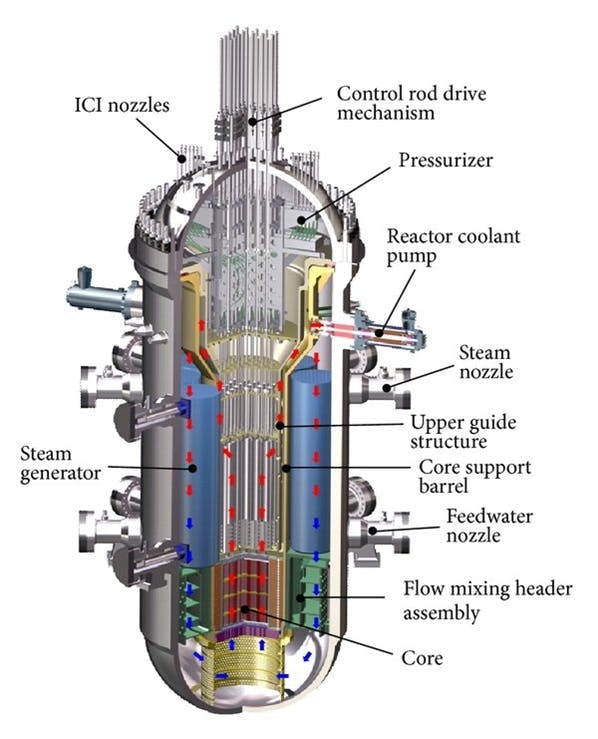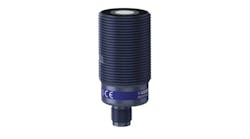Why this article is important:
- This article offers a technical introduction to SMRs — a cutting-edge area that may redefine how process engineers think about power generation, modular design and distributed energy systems.
- It raises key questions around coolant level measurement technologies, such as noncontacting gravity sensors vs. traditional methods.
- It helps engineers better understand the economic and logistical drivers behind the shift toward modular systems.
Q: Can you help me better understand and instrument small modular reactors (SMRs)? I’m particularly interested in measuring the level of coolant in the SMR by using noncontacting gravity sensors. I want to learn their pros and cons relative to differential pressure, guided wave radar or heated thermocouple sensors.
I’m also interested in the best Incore instrumentation (ICI) package for SMRs to measure neutron flux distributions and temperatures in various locations within the reactor core.
Z. Friedmann, control engineer / [email protected]
A1: In a self-sustaining chain reaction of the nuclear fission process, the impact of neutrons splits the uranium 235 atoms in the fuel rods. The splitting releases more neutrons and energy (E = mc2). Each gram of fuel releases enough energy to boil over 38,000 tons of water. The rate of energy release of this chain reaction is adjusted by manipulating the insertion of control rods, which, as they are inserted deeper, capture more neutrons (lowering the neutron flux).
Large nuclear reactors are expensive. They can take more than a decade to build and, in the past, they had major accidents (Three Mile Island, Chernobyl, Fukushima). In this age of cyber-terrorism, these incidents are likely to be repeated. As of today, the cost of nuclear electricity is already more expensive than solar- or wind-based renewable electricity. Meanwhile, renewable electricity costs continue to drop while nuclear electricity costs rise. One reason is because solar electricity is beginning to be transported over long distances from high-insolation areas by undersea cables or in the form of hydrogen.
Getting SMRs into operation
There are no SMRs (Figure 1) in operation in the U.S., partly because of the lengthy regulatory processes of the Nuclear Regulatory Commission (NRC). Similarly, around the world they are still in the development stage. However, they benefit from the experiences which have been obtained by fueling nuclear submarines that use reliable, small, and quiet nuclear reactors.
As to the cost of SMRs, only reference estimates exist. In the tabulation below, one study compares SMR cost figures to cost data for full size (1,114 MW) reference reactors. Another, prepared by the International Atomic Energy Agency (IAEA), gives the 2020 generating costs.
|
COMPARISON (Standard vs SMR) |
STANDARD 1,114 MW |
SMR 114 MW |
|
Capital cost (in 2017 dollars) |
$5.5 billion |
$0.3 billion |
|
Generating unit cost ($/KW in 2017 dollars) |
$4,764 |
$2,653
|
|
Generating unit cost ($/KW in 2020 dollars) |
$4,000 to $9,000 |
$2,000 to $6,000 |
|
Construction time |
6 yrs |
1.5 yrs |
Serving distributed grids
I believe that public opinion favors the building of smaller (safer), less expensive, preassembled and portable. SMR power plants in the future. If installed near solar parts as a backup, the combination will result in a continuous source of electricity, which in remote areas can also desalinate sea water. In other areas where grids do exist, it can replace the large and centralized ones with several smaller ones so that the electricity source and users will be closer to each other, reducing the electricity transport costs.
Get your subscription to Control's tri-weekly newsletter.
SMRs make intermittently available electricity from solar or wind farms, when located next to them. Also, small nuclear reactors have been successfully used on nuclear submarine applications, because of their quietness and good safety records. SMRs are good candidates to play a significant role in the global energy landscape.
In my books, I suggested developing the technology for building self-protecting reactors, which in case of overheating shoots themselves down without requiring any outside energy source. By automatically responding to overheating, these reactors rely only on the forces of nature that are always present and can’t fail or be turned off. Such forces include gravity and thermal expansion.
In such a design, if cooling fails for any reason and the reactor temperature rises, the resulting thermal expansion automatically opens the cooling water depending only on gravity for the water to enter from its storage above. These designs do not yet exist, but if developed, would operate similarly to SMRs underwater.
Béla Lipták / [email protected]
More from Ask the Experts:







